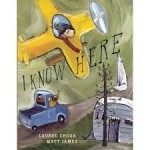Meet Linda. The start of the school year has come and gone and she has finally been successful at landing her first Long Term Occasional teaching assignment in October. It’s an FDK/Grade 1 class, and given the dynamics of the FDK program, she struggles to even make sense of what that might actually look like.
Meet Lester. After finally feeling settled with his Grade 5 class, he learns that as a result of a school wide reorganization, his neatly packaged single-grade class has now become a “split-grade” class.
Do either of these situations sound familiar? Do these narratives hold true for your current experience? Before you pull out your hair or scream, here are some practical strategies that will help you navigate this new experience. Consider the following 3Cs, Context, Community and Curriculum, for teaching in a multigrade classroom.
Context: Although a multigrade classroom is not the ideal setting for an optimum teaching and learning experience, it is worth re-imagining the situation as a combined class rather than a “split grade.” The idea of a “split” gives the impression of a type of separateness that does not accurately describe the context of learning in a class of students who generally are within the same developmental stages. The great news is that combined grade class have of two consecutive grades in one class as opposed to grades that are years apart. In this way, a combined grade class maintains a similar diversity of students, range of learning styles, social skills and academic needs as in a single grade classroom.
Community: Rethinking the notion of a “split” grade can do wonders for the type of classroom environment you nurture. As in any class dynamic, students learn best in an environment that is inclusive and fosters a of sense community and belonging. As such, the ways in which the class environment is setup should work to unite students rather than separate them based on grade. Students should have opportunities to work in flexible groupings using a range of collaborative learning structures as often as possible to invite positive peer interactions through both collaborative and independent learning situations. A combined grades should never be thought of as housing two classes in one room. Rather, students should know that they are one class engaging in similar learning opportunities. Students should be taught how to navigate their unique learning situation by explicitly teaching the importance of cooperation, and how to engage in learning that takes on a variety of groupings; such as whole class, small group, partners or even independent learning. Inviting leadership opportunities and encourage students to view their peers as resources will help to establish a community based on cooperative interdependence.
Curriculum: The idea of covering a combination of two curricula is one of the primary concerns for teachers who have been assigned combined grades. In Ontario, thankfully, many of the content areas align in ways that make tackling both grades more manageable. These content areas include Mathematics, Language, Health and Physical Education and The Arts. In these curricular areas, differentiating instruction is an essential tool for ensuring that the overall expectations of each grade is addressed and assessed. Differentiating content, process and product will allow for a seamless flow between the different grade expectations. At the same time, using the gradual release of responsibility will set the tone for independence that is often essential in a combined grade classroom. For content areas that are less similar such as Social Studies and Science, teaching through an inquiry framework allows teachers to focus on essential skills and invite students to apply those skills in different contexts. By focusing whole-class instruction on big ideas, thinking processes and strategies, teachers are able to engage students in parallel learning experiences while differentiating content.
Teaching a combined grade is never easy. But with the heart for learning and the art of teaching with finesse, even the least of ideal situations can be one that is done successfully.
For more information about teaching in a combined grade class, check out the resource Learning Together: A Teacher’s Guide to Combined Grades at Shop ETFO.


 math around how many showings of the play we would need to do if we had room for 35 seats in the classroom. We talked about what it would be like if we charged money for the show, what would we use the money for, how much would we get if we charged $0.25 per seat, $1.50 per seat, etc. What if your ticket included popcorn, how much would it cost? We purchased popcorn, popped it and measured how many servings we could get out of it. Then we did the math on how many bags we would need and how much we would need to charge for it. They worked out the math on how long the show was, how much time would be required between showings to get organized again, and then looked at the school schedule to see how many showings they could fit in during the day. They wrote reviews of the play for the newspaper, they wrote ads to go on the announcements, they even filmed commercials! They made a program to hand out, worked out how many copies they would need, they did it all.
math around how many showings of the play we would need to do if we had room for 35 seats in the classroom. We talked about what it would be like if we charged money for the show, what would we use the money for, how much would we get if we charged $0.25 per seat, $1.50 per seat, etc. What if your ticket included popcorn, how much would it cost? We purchased popcorn, popped it and measured how many servings we could get out of it. Then we did the math on how many bags we would need and how much we would need to charge for it. They worked out the math on how long the show was, how much time would be required between showings to get organized again, and then looked at the school schedule to see how many showings they could fit in during the day. They wrote reviews of the play for the newspaper, they wrote ads to go on the announcements, they even filmed commercials! They made a program to hand out, worked out how many copies they would need, they did it all. that was very interested in restaurants. So we incorporated the social studies of food from around the world, and we turned out whole class into a restaurant that served dishes from different places around the world. Again, we did advertising, signage, lots of math around how much we would need of different supplies, etc.
that was very interested in restaurants. So we incorporated the social studies of food from around the world, and we turned out whole class into a restaurant that served dishes from different places around the world. Again, we did advertising, signage, lots of math around how much we would need of different supplies, etc.



